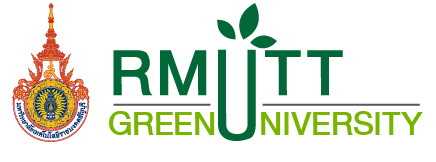Organic Waste Treatment
Total volume organic waste produced

The table indicates the total amount of organic waste on campus in tons. It can be seen that the waste from banana trees is the biggest of all, followed by food waste, and then weed and leaf. The university put an effort to take advantage of these wastes in the following ways:
Food waste: The system settings or infection settings cultivated microorganisms ready to be used for decomposition. The system produced fertilizer from fermented microorganisms present in organic waste by using a bio-digester (Macronutrient content: total nitrogen (3.6%), phosphorus (2.3%) and potassium (2.4%), organic matter (70%), C/N (11:1)). Six hundred kg of biomass waste was decomposed per day and produced 60 kg of bio-fertilizer a day or 115 tons/year. The products are primarily for self-consumption on farms.
Banana tree waste: Associate Professor Dr. Sakorn Cholasakorn, Dean of the Faculty of Home Economics at Rajamangala University of Technology Thanyaburi and Natural fiber research professor has conducted a project for fabrics from plant fibers. This project aims to use agricultural waste from banana fibers to produce beautiful fabrics. Waste from bananas at 288 tons can be changed into 720 shirts per year on average, which helps reduce the burden of waste as well.
Weed, leaf: Employees of Rajamangala University of Technology Thanyaburi have performed to dispose of organic waste by allowing natural degradation and then reusing it on campus. Organic waste was collected at 6,000 kg/month and bio-fertilizer was produced at 500-600 kg/month.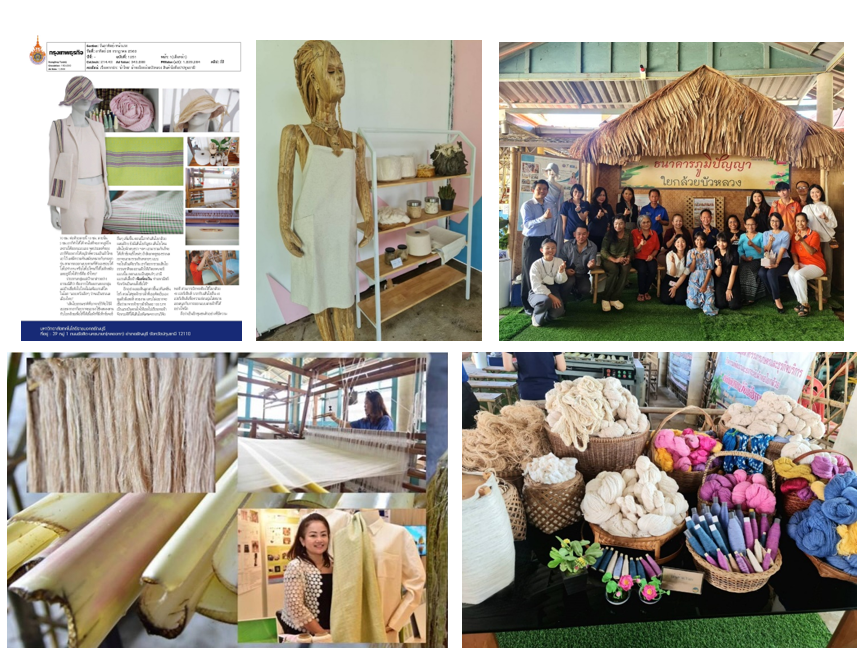
Organic waste of hyacinths as clothing fiber, RMUTT.
Description: Associate Professor Dr. Sakorn Cholasakorn, Dean of the Faculty of Home Economics at Rajamangala University of Technology Thanyaburi and Natural fiber research professor has conducted a project for fabrics from plant fibers. This project aims to use agricultural waste from banana fibers to produce beautiful fabrics. It also allows people in the community to take part in caring for nature, protecting the environment, and reducing the burden of waste as well.
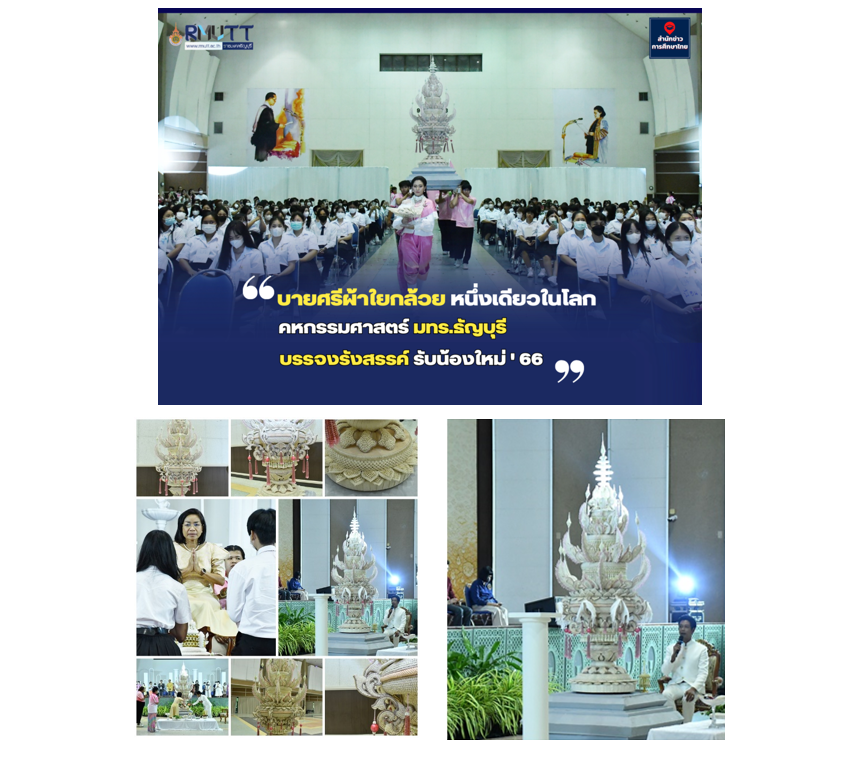
The organic waste of hyacinths used the fiber clothing, RMUTT.
Description: The Faculty of Home Economics Technology at Rajamangala University of Technology Thanyaburi has organized an orientation activity for new students in the academic year 2023, welcoming students with innovative arts and crafts made from banana fiber clothes. The activity has integrated the research work of Associate Professor Dr. Sakorn Chonsakorn, Dean of the Faculty of Home Economics Technology.
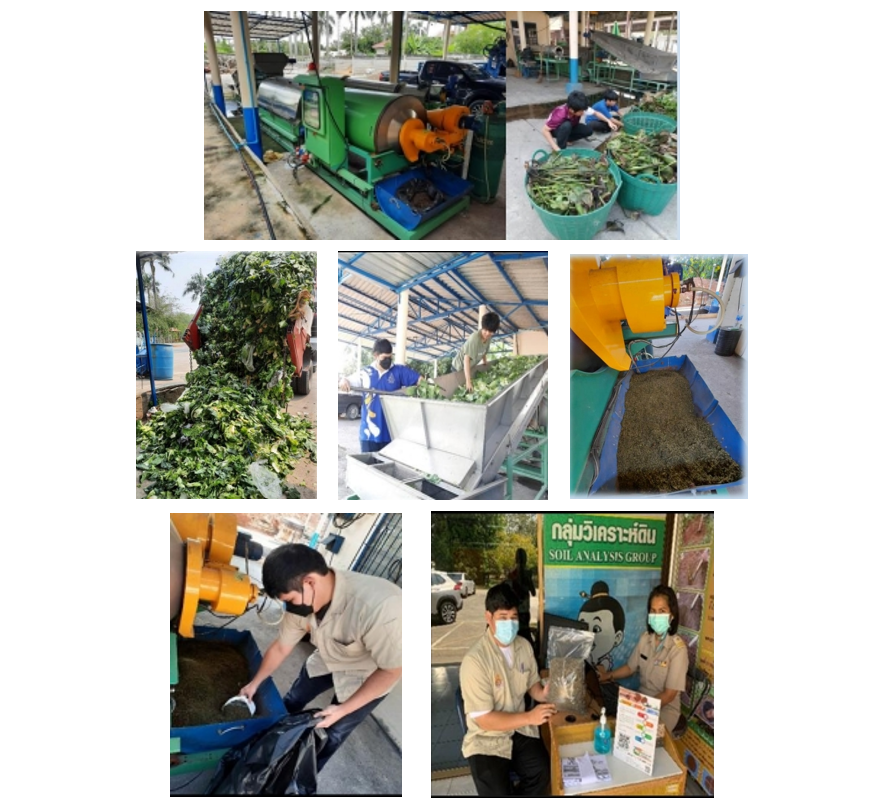
This project is a bio-digester that treats organic waste in a local and sustainable way to produce bio-nutrients for garden, RMUTT.
Description: The system settings or infection settings cultivated microorganisms ready to be used for decomposition. The system produced fertilizer from fermented microorganisms present in organic waste by using a bio-digester (Macronutrient content: total nitrogen (3.6%), phosphorus (2.3%) and potassium (2.4%), organic matter (70%), C/N (11:1)). Six hundred kg of biomass waste was decomposed per day and produced 60 kg of bio-fertilizer a day. The products are primarily for self-consumption on farms.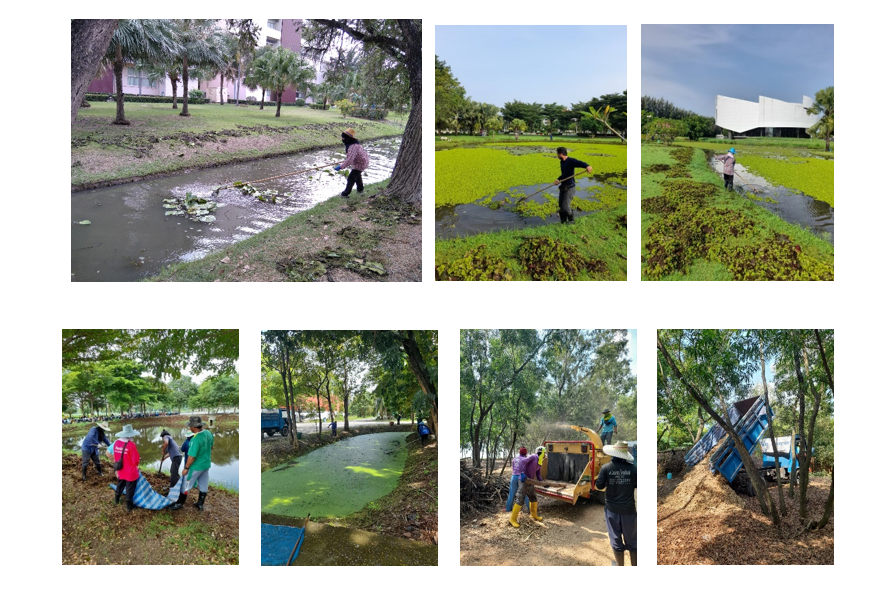
The use of organic waste as planting material and fertilizer for plantation on campus, RMUTT.
Description: Employees of Rajamangala University of Technology Thanyaburi have performed to dispose of organic waste by allowing natural degradation and then reusing it on campus. Organic waste was collected at 6,000 kg/month and bio-fertilizer was produced at 500-600 kg/month.
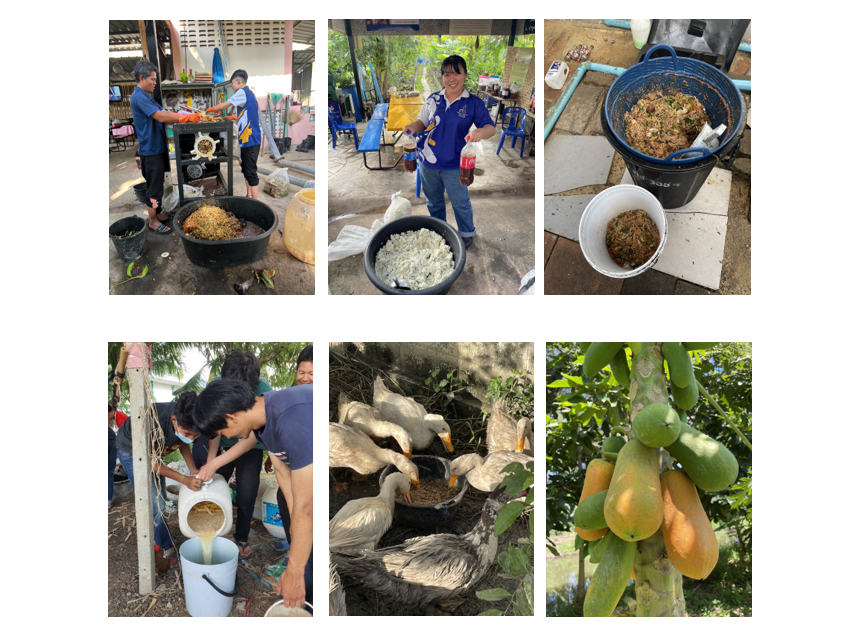
Organic waste used as animal feed and fertilizer for cultivation In the King’s Science Learning Center Rajamangala University of Technology Thanyaburi.
Description : Rajamangala University of Technology Thanyaburi has organized a project aimed at disposing of organic waste by allowing it to naturally decompose into fertilizer for cultivation and used to feed animals at the Royal Science Learning Center.
